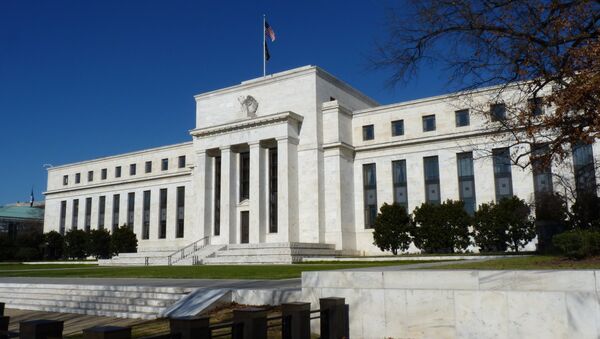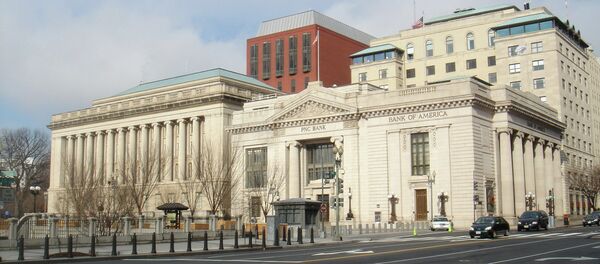Kristian Rouz – As the US Federal Reserve is about to encounter their hardest and most significant policy decision in almost a decade this week, a murky global outlook with slowing growth in the emerging markets and feverish financial markets elsewhere seems to be shadowing the possibility of a hike in US borrowing costs on September, 17.
However, aside from the international headwinds and weak domestic inflation, there are hardly any implications to the Fed’s rise in base interest rate, as waiting any longer will not make the situation more favorable next time around: It will still be blurry, though slightly different.
Meanwhile, as the US economy accelerates, many bankers have reported an increased demand for credit. Consumer market data support such claims.
The Fed is facing a multi-faceted dilemma, as both choices – whether to raise rates or not – are unpleasant, while further waiting threatens to destabilize the financial sector. The regulator had previously intended to increase borrowing costs in June, but instead chose to take a three-month time-out in order to scrutinize the macro data, study possible gains and losses to the economy, and, finally, to hone their wording when communicating with the market.
The break did not bring much clarity into the matter: while the growth has accelerated, supporting the planned hike, inflation has nearly stalled, undermining the Fed’s careful planning. Amid the mixed macro data, the deepening global economic turmoil put into question the very necessity of any significant policy moves as many US manufacturers, traders and consumers fear deterioration of economic environment at home.
US investors are expecting a 70% probability the Fed will further delay the hike. However, such an option also means the guessing game Wall Street has played for almost a year will indefinitely continue, stirring higher market volatility and fueling a greater demand for safe haven assets.
Simultaneously, another protraction will spur a major ‘last minute shopping’ demand for credit and dollar-denominated assets. Whilst the former bears risks of market overheating, similar in fashion to the 2008 meltdown, the latter means an even greater appreciation of the US dollar, in turn hitting inflation.
Either way, whether the Fed raises rates or not –inflation will suffer, as will the pace of expansion in the real economy.
For now, there are two possible outcomes of the Federal Open Market Committee meeting ending on 17 September. First, the Fed moves rates up slightly, referring, as outlined above, to how harmful waiting further would be. Second, the Fed refers to global financial risks, promising an inevitable hike in the future, possibly outlining the timing that is more particular so as to ease market uncertainly.
A group of US banks, borrowing from the Fed directly, has put forward a consensus expectation of the hike happening in December rather than now. However, smaller banks involved in consumer lending, in particular, are yearning for an immediate hike: their market niche shows signs of overheating.
The Franklin, WV-based Pendleton Community Bank is among the market participants ready to raise the cost of financial services they provide amid a feverish demand for credit.
Like other small banks, the Pendleton Community bank is relying on their consumers’ deposited money to fund their lending. While Fed borrowing costs are ultra-low, and the economy accelerates, people naturally tend to borrow rather than save meaning smaller banks are on the brink of being short of financial resources.
The FOMC policymakers’ opinions are generally hawkish, with the likes of Jeffrey Lacker of the Federal Reserve bank of Richmond, VA, saying now’s the time to start returning monetary policy back to normal. Boston Fed chair Eric Rosengren was quoted as saying that inflation will accelerate to the 2% target eventually, with deflation being hardly a threat in the case of a rate hike at this point.
The likeliest reason why the Fed could still delay the hike is that this time around they might want to see how Wall Street reacts to the unfavorable global outlook. The greenback’s steady appreciation is the main threat to US inflation unless the reshoring in manufacturing accelerates, which, in turn, requires a tighter monetary environment.
However cautiously the Fed might turn out to be, there is an understanding that it takes time for policy actions to take a visible effect to the economy. Also, there is a lag in timing, accordingly to which the regulator receives data. All that means that with a current approach, the Fed are going to wait forever, abstaining from policy moves each time, and being ultimately too late.




